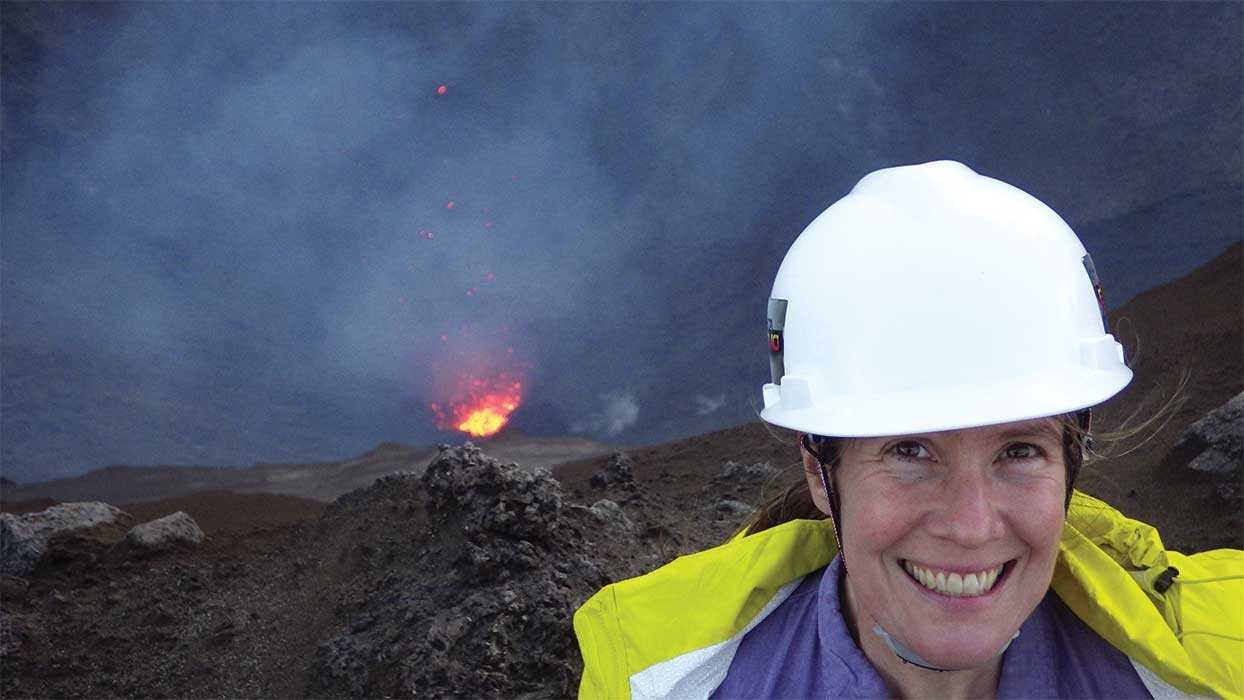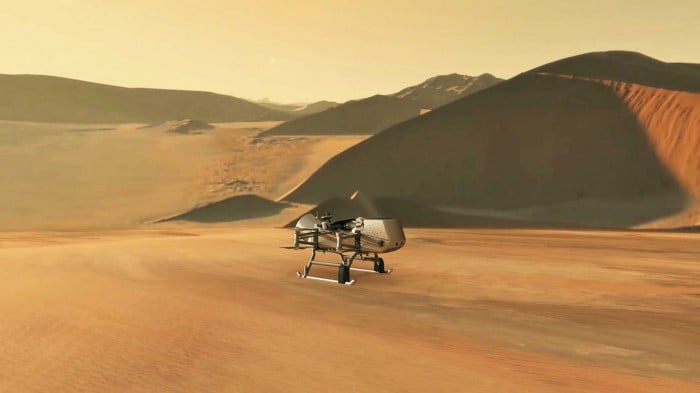
Elizabeth “Zibi” (Pope) Turtle ’89 doesn’t remember a time when she couldn’t name the planets in our solar system. “My grandmother knew all of the myths associated with the constellations,” she says. “My father worked at Hanscom Air Force Base studying auroral phenomena. In my family we were always looking up at the sky.” So as a physics major at MIT, she naturally gravitated toward astrophysics classes—and fit in plenty of astronomy classes as well.
A planetary scientist at the Johns Hopkins University Applied Physics Laboratory since 2006, Turtle studies the surfaces of planets and their satellites. For the next two decades, she is slated to serve as principal investigator for NASA’s Dragonfly mission to Titan, Saturn’s largest moon.
“I chose to study planets because they are tangible,” Turtle says. “You can get to them to make measurements.” As a researcher and investigator, she has helped NASA do just that in missions including Cassini-Huygens, which studied the planet Saturn and its rings and moons; Galileo, which studied Jupiter and its moons; and the Lunar Reconnaissance Orbiter, currently studying Earth’s moon. Turtle is now the principal investigator for the imaging system on NASA’s Europa Clipper—a spacecraft scheduled to launch as early as 2023 to explore Jupiter’s moon Europa. Her lead role on the Dragonfly project was announced in June 2019.

Titan is a tantalizing venue for studying prebiotic chemistry. It is etched with a network of rivers, lakes, and even seas of liquid ethane and methane, which evaporate, precipitate, and flow across its surface much the way water does on Earth. This hydrologic cycle, along with the presence on Titan’s surface of complex organic compounds and the possibility that these interacted with liquid water in the past, make this moon a compelling analogue for Earth before it hosted life.
“I doubt we’ll find water-based life on a moon with a temperature of 94 K [−290 °F],” says Turtle. “The science focus is the chemistry itself, although there is the possibility that chemistry proceeded to biology on Titan. In planetary science, we’ve long learned never to say never.”
The eight-rotor, roughly 600-kilogram (1,300-pound) Dragonfly spacecraft is scheduled to launch in 2026 and arrive on Titan in 2034 after traveling more than 3 billion miles. For nearly three years after arrival, it will fly dozens of “hops” of several miles each through Titan’s dense atmosphere to examine features of the surface. Soil samples from sites including an impact crater and organic dunes will be analyzed by the vehicle’s mass spectrometer in order to study chemical compounds and interactions similar to those that preceded the emergence of life on Earth. Dragonfly’s instruments will also monitor Titan’s atmosphere and chart subsurface seismic activity.
Turtle built her scientific foundations at MIT and later as a PhD student at the University of Arizona, but it was through participating in NASA missions—involving hundreds of people at what she terms the “rich interface between engineering and science”—that she picked up the managerial skills a principal investigator needs.
The next seven years will be intense for Turtle and her Dragonfly team as they design and build the vehicle and its instrumentation in preparation for the 2026 launch. The following eight years will be equally full as the team refines its scientific program while the Dragonfly flies toward Titan. When asked whether dealing with the immense distances of our solar system has altered her sense of time on Earth, she says no. “Then again, I do have dates on my calendar for 2026 and 2034,” she says with a laugh. “I’m not sure how many people can say that.”
Keep Reading
Most Popular
Large language models can do jaw-dropping things. But nobody knows exactly why.
And that's a problem. Figuring it out is one of the biggest scientific puzzles of our time and a crucial step towards controlling more powerful future models.
How scientists traced a mysterious covid case back to six toilets
When wastewater surveillance turns into a hunt for a single infected individual, the ethics get tricky.
The problem with plug-in hybrids? Their drivers.
Plug-in hybrids are often sold as a transition to EVs, but new data from Europe shows we’re still underestimating the emissions they produce.
Stay connected
Get the latest updates from
MIT Technology Review
Discover special offers, top stories, upcoming events, and more.